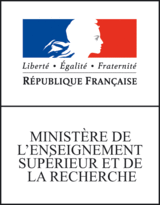Upgrade to Grew 1.4 (October 2020)
This page describes the breaking changes in Grew and provides the information needed to update a Graph Rewriting System and the CLI commands. For older upgrading info, see upgrade_old.
CLI (Command Line Interface)
the -config argument
See here.
GRS (Graph Rewriting System)
Add a new edge with a label taken in the pattern
In the previous version, the syntax add_edge e: N -> M was used for adding a new edge between N and M with a label identical to the edge named e in the pattern.
In the 1.4 version, the semantic of the same syntax has changed.
Now, the syntax add_edge e: N -> M means: add a new edge between N and M and give it the fresh name e.
In order to have the same semantic as the previous version, the command:
add_edge e: N -> M; # e being an edge declared in the pattern
must be replaced by:
add_edge f: N -> M; # f is a fresh name
f.label = e.label; # the label of f is set to be equal to the one of e.
Hopefully, this should not produce unexpected behaviour:
- If the old syntax is used with the new Grew version (≥ 1.4), the error
ADD_EDGE_EXPL: the edge name 'e' already usedis reported. - If the new syntax is used with the old Grew version (< 1.4), the error
Unknown identifier "f"is reported.
Access to the label of an edge in the pattern
| Constraint | Old syntax | New syntax |
|---|---|---|
| equality of two edge labels | label(e1) = label(e2) |
e1.label = e2.label |
| inequality of two edge labels | label(e1) <> label(e2) |
e1.label <> e2.label |
Avoid duplicate matching solutions
When several nodes are equivalent in a pattern, each occurrence is reported several times (up to permutation on the set of equivalent nodes).
For instance, to search for two relations det with the same governor, the pattern below will return twice each solution.
pattern {
G -[det]-> D1;
G -[det]-> D2;
}
To avoid this, it is possible to give an ordering constraint on some internal identifier:
- old_syntax:
id(D1) < id(D2) - new_syntax:
D1.__id__ < D2.__id__
The complete pattern in new syntax:
pattern {
G -[det]-> D1;
G -[det]-> D2;
D1.__id__ < D2.__id__;
}




